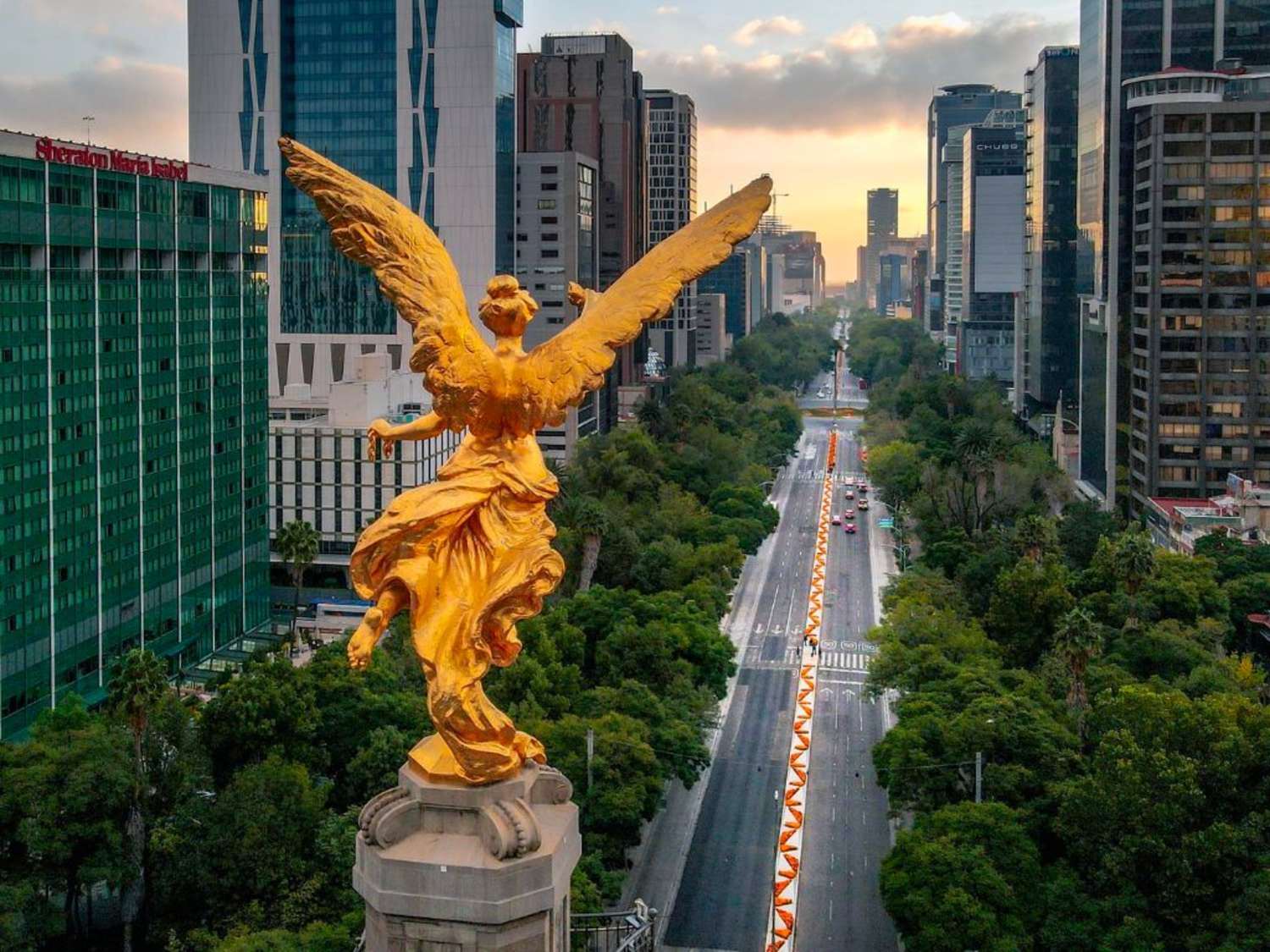Have you ever wondered where you can find a thriving art scene that will captivate your senses and leave you in awe? Well, look no further than Mexico City! With its rich cultural heritage and vibrant atmosphere, this city has quickly become a haven for artists and art enthusiasts from around the world. In this article, we’ll delve into the details of Mexico City’s art scene, exploring the museums, galleries, and street art that make it truly one of a kind. So get ready to immerse yourself in a world of creativity and beauty that will leave you wanting more!
When it comes to the art scene, Mexico City offers a delightful mix of traditional and contemporary art forms. The city is home to numerous world-class museums showcasing works by renowned Mexican artists such as Frida Kahlo and Diego Rivera. Whether you’re a fan of classical paintings or modern installations, there’s something for everyone. And if you prefer a more intimate experience, you can explore the local galleries that display works by emerging artists, giving you a glimpse into the future of Mexican art. In addition to the indoor spaces, the city’s streets are adorned with vibrant street art, where you can admire the talent and creativity of local and international artists. So prepare yourself for a visual feast that will ignite your imagination and leave you with a deeper appreciation for the power of art. In the following article, we’ll guide you through the must-visit destinations and hidden gems of Mexico City’s thriving art scene, ensuring that you make the most of your cultural adventure. Stay tuned!
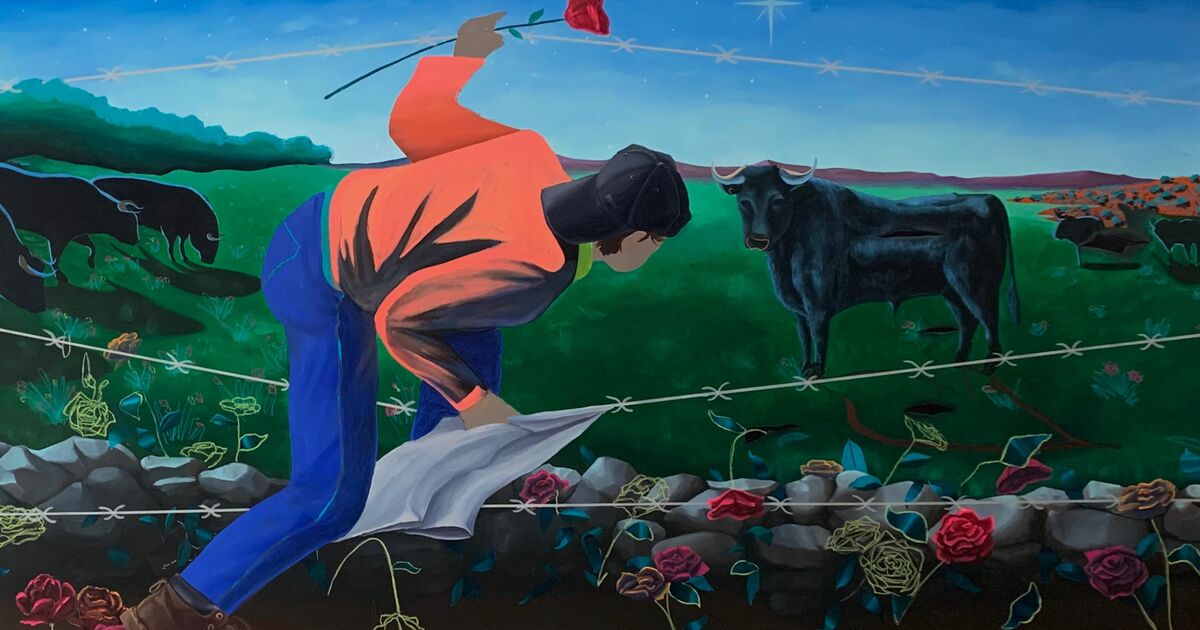
Immerse Yourself in the Thriving Art Scene of Mexico City
If you’re a lover of art and culture, Mexico City is a destination that should be at the top of your list. With its rich history, diverse indigenous cultures, and vibrant contemporary scene, the capital of Mexico offers a wide range of artistic experiences that will captivate your senses. From historic museums to stunning murals, art districts to cultural festivals, Mexico City has it all. So, pack your bags and get ready to immerse yourself in the thriving art scene of Mexico City.
A Historical Overview of Mexican Art
Mexican art has a deep-rooted history that dates back thousands of years. The indigenous cultures that thrived in the region long before the arrival of the Spanish brought forth a unique artistic expression. From intricate murals and sculptures to colorful pottery and textiles, the ancient civilizations of Mexico left behind an impressive legacy.
The Influence of Indigenous Cultures on Mexican Art
One cannot talk about Mexican art without recognizing the significant influence of indigenous cultures. The art of the Aztecs, Maya, and other native groups is characterized by intricate symbolism, vibrant colors, and a deep connection to nature and spirituality. This influence can be seen in contemporary Mexican art, where artists continue to draw inspiration from their indigenous roots.
The Muralist Movement in Mexico
One of the most iconic periods in Mexican art history is the Muralist Movement of the early 20th century. Led by renowned artists such as Diego Rivera, David Alfaro Siqueiros, and José Clemente Orozco, this movement aimed to bring art out of galleries and into public spaces. The murals created during this time depicted various aspects of Mexican history, culture, and social struggles, making them a powerful form of political and social commentary.
Contemporary Mexican Art
While Mexico City is known for its rich artistic history, it is also a hub for contemporary art. The city is home to numerous galleries, art spaces, and artist collectives that showcase the works of emerging and established artists. From experimental installations to thought-provoking performances, contemporary Mexican art pushes boundaries and challenges viewers’ perspectives.
Art Festivals and Events in Mexico City
Mexico City hosts a multitude of art festivals and events throughout the year, each offering a unique and immersive artistic experience. Zona MACO, the largest contemporary art fair in Latin America, brings together artists, collectors, and gallery owners from around the world. The Feria Internacional de Arte Contemporáneo (FIA) showcases cutting-edge contemporary art in various mediums. The Mexico City Gallery Weekend allows visitors to explore the city’s vibrant art scene by visiting galleries, attending talks, and participating in special events. The MUAC Film Program combines film and art, offering screenings and discussions on topics related to contemporary art. And the Festival de la Ciudad de México celebrates the city’s cultural diversity through music, dance, theater, and visual arts.
Museums and Galleries in Mexico City
No visit to Mexico City’s art scene is complete without exploring its world-class museums and galleries. Here are some must-visit destinations for art enthusiasts:
National Museum of Anthropology
The National Museum of Anthropology is one of the most important museums in Mexico City. It houses an extensive collection of artifacts from the pre-Hispanic era, including sculptures, ceramics, and textiles. The museum provides a comprehensive overview of Mexico’s diverse indigenous cultures, allowing visitors to gain a deeper understanding of the country’s rich history and artistic heritage.
Palacio de Bellas Artes
The Palacio de Bellas Artes is a stunning architectural masterpiece that serves as a venue for both performing arts and visual arts. Its art deco style and exquisite interiors provide a breathtaking backdrop for the exhibitions held here. The museum features a diverse collection of Mexican artworks, including paintings, sculptures, and photography, showcasing the country’s artistic evolution over the centuries.
Museo Frida Kahlo (Casa Azul)
The Museo Frida Kahlo, also known as the Casa Azul (Blue House), is dedicated to the life and works of Mexico’s iconic artist, Frida Kahlo. This vibrant museum offers a glimpse into Kahlo’s personal life through her personal belongings, artworks, and the spaces she inhabited. Visitors can explore the rooms where Kahlo and her husband, Diego Rivera, lived, and gain a deeper understanding of Kahlo’s unique artistic vision.
Museo Soumaya
The Museo Soumaya is a contemporary art museum that houses the extensive art collection of Carlos Slim, one of the world’s richest men. The museum showcases a wide range of artworks, including European and Mexican paintings, sculptures, and decorative arts. Its iconic silver building, designed by architect Fernando Romero, is a sight to behold and has become a major landmark in Mexico City.
MUAC (University Museum of Contemporary Art)
The MUAC, located on the campus of the National Autonomous University of Mexico (UNAM), is a leading institution for contemporary art in Mexico City. It hosts exhibitions featuring both national and international artists, aiming to foster dialogue and critical thinking around contemporary art practices. The museum also offers educational programs, workshops, and lectures to engage the public and promote artistic exploration.
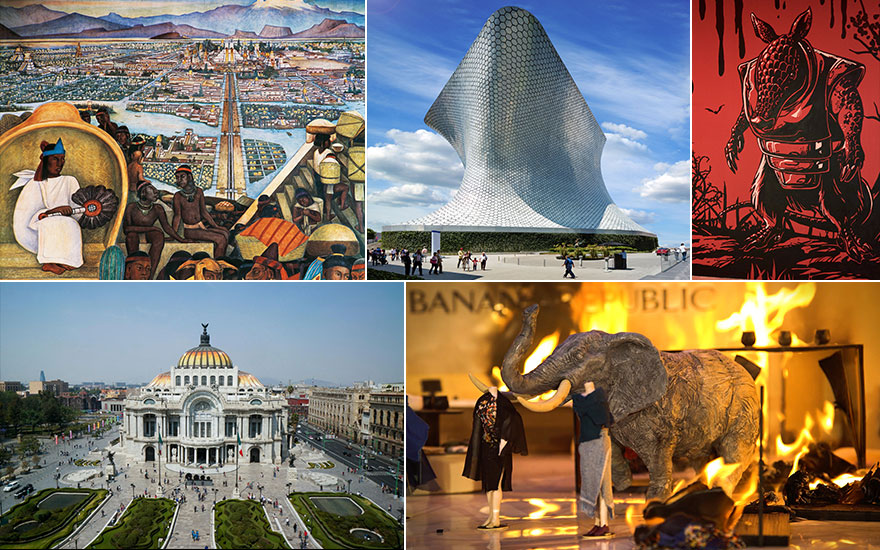
Public Art and Muralism in Mexico City
Mexico City is known for its vibrant street art and iconic murals. Here are some highlights of the city’s public art scene:
Street Art in Mexico City
Walking through the streets of Mexico City, you’ll encounter an explosion of colors, shapes, and messages expressed through street art. From massive murals covering entire buildings to small stickers and stencils hidden in alleyways, the city is a living canvas for artists. Street art in Mexico City reflects the diversity of its people, their struggles, and their dreams, serving as a form of self-expression and social commentary.
The Famous Murals of Diego Rivera
Diego Rivera, one of Mexico’s most celebrated artists, left an indelible mark on the art scene with his iconic murals. His works can be found in various public spaces and institutions throughout the city, telling stories of Mexico’s history, social injustices, and indigenous cultures. The Palacio Nacional, the Secretariat of Public Education, and the National Palace Museum are just a few places where you can admire Rivera’s monumental murals.
The Legacy of David Alfaro Siqueiros
Another influential muralist of the 20th century, David Alfaro Siqueiros, contributed significantly to the public art scene in Mexico City. His murals, characterized by their powerful and dynamic compositions, can be seen in numerous locations, including the Polyforum Cultural Siqueiros, the National Preparatory School, and the Palace of Fine Arts. Siqueiros’ works often address political and social issues, aiming to provoke thought and inspire change.
Muralism as a Political and Social Commentary
Muralism has always been deeply interconnected with political and social movements in Mexico. From the revolutionary fervor of the early 20th century to contemporary protests and demands for social justice, murals have served as a platform for expressing dissent, raising awareness, and promoting unity. The art form continues to play a crucial role in shaping public discourse and empowering marginalized voices in Mexico City.
Exploring Art Districts and Neighborhoods
To truly delve into Mexico City’s art scene, make sure to visit its vibrant art districts and neighborhoods. Here are some noteworthy areas to explore:
La Roma and La Condesa
La Roma and La Condesa are two adjoining neighborhoods that have become hotspots for art, culture, and nightlife. Strolling through their tree-lined streets, you’ll find a plethora of art galleries, boutiques, and hip cafes. The neighborhoods are known for their vibrant street art and architectural gems, making them a paradise for art lovers and photographers.
Centro Histórico
As the historical heart of the city, Centro Histórico is a UNESCO World Heritage site that holds countless artistic treasures. From the iconic Zócalo Square to the majestic Metropolitan Cathedral, this area is teeming with architectural wonders. Museums such as the Palacio de Bellas Artes and the Franz Mayer Museum reflect the rich artistic heritage of Mexico City. Exploring the narrow streets of Centro Histórico, you’ll encounter street musicians and performers, adding to the lively atmosphere.
Coyoacán
Coyoacán is a bohemian neighborhood known for its cobblestone streets, colonial architecture, and cultural heritage. This charming area was once home to famous artists like Frida Kahlo and Diego Rivera. The Casa Azul, Kahlo’s former residence and now a museum, offers a glimpse into her life and the art she created. Coyoacán also hosts an artisan market and several galleries showcasing the works of local artists.
San Ángel
San Ángel is a picturesque neighborhood that exudes colonial charm and tranquility. It is home to the Diego Rivera and Frida Kahlo Studio Museum, where Rivera and Kahlo lived and worked. The neighborhood’s narrow streets are dotted with art galleries, antique shops, and beautiful gardens, making it a delightful place to wander and discover hidden artistic gems.

Artistic Events and Festivals
Mexico City is a vibrant hub for artistic events and festivals, offering unique opportunities to engage with the local art scene. Here are some highlights:
Zona MACO
Zona MACO is Mexico City’s premier contemporary art fair, attracting renowned artists, collectors, and galleries from around the world. The fair showcases a wide range of contemporary art practices, including painting, sculpture, photography, and performance art. It offers visitors the chance to discover and acquire works by both established and emerging artists, making it a must-visit event for art enthusiasts.
Feria Internacional de Arte Contemporáneo (FIA)
The Feria Internacional de Arte Contemporáneo (FIA) is another major art fair in Mexico City that focuses on contemporary art. It brings together galleries, curators, and artists to showcase cutting-edge artworks and encourage dialogue around current art trends. The fair provides a platform for emerging talents to gain exposure and establish connections within the art world.
Mexico City Gallery Weekend
The Mexico City Gallery Weekend is an annual event that allows visitors to explore the city’s diverse gallery scene. Over the course of a weekend, galleries open their doors to the public, presenting curated exhibitions, artist talks, and special events. The event aims to foster collaboration between galleries, collectors, and artists, and to promote the appreciation of contemporary art.
MUAC Film Program
The MUAC Film Program combines film and art, offering screenings of contemporary films that explore themes related to art, culture, and society. The program features a diverse range of films, including documentaries, experimental works, and feature films, providing a unique perspective on the intersection of film and contemporary art.
Festival de la Ciudad de México
The Festival de la Ciudad de México celebrates the cultural diversity of Mexico City through a variety of artistic disciplines. The festival includes music concerts, dance performances, theater productions, and visual arts exhibitions held in various venues across the city. It provides an opportunity for both locals and visitors to experience the vibrant artistic energy of Mexico City.
Artwork Inspired by Mexican Culture and History
Mexican art is deeply intertwined with the country’s rich culture and history. Here are some themes and influences that frequently appear in Mexican artwork:
Frida Kahlo and Surrealism
Frida Kahlo, one of Mexico’s most iconic artists, is known for her deeply personal and introspective works. Her paintings often explore themes of identity, pain, and love, reflecting her own experiences and struggles. Kahlo’s artworks are characterized by surreal elements, vibrant colors, and intricate symbolism, contributing to the broader movement of Surrealism.
Religious Art and Iconography
Religion has played a significant role in Mexican culture throughout history, and this is often reflected in its art. Religious art and iconography, which include images of saints, virgins, and religious events, can be found in churches, museums, and private collections throughout the country. These artworks serve as a testament to the deeply rooted religious beliefs and traditions of Mexico.
Pre-Hispanic Art and Indigenous Influences
The art of ancient civilizations, such as the Aztecs and Maya, continues to inspire contemporary Mexican artists. Pre-Hispanic art is characterized by intricate geometric patterns, symbolic motifs, and a deep connection to nature. Indigenous influences can be seen in various art forms, including paintings, sculptures, and textiles, as artists draw upon their heritage and seek to revive and preserve indigenous cultural traditions.
Alebrijes and Folk Art
Alebrijes are fantastical creatures that have become synonymous with Mexican folk art. These colorful sculptures, often made from carved wood or papier-mâché, depict mythical animals and hybrid creatures. Alebrijes showcase the creativity and craftsmanship of Mexican artisans, blending indigenous traditions with contemporary artistic expressions.
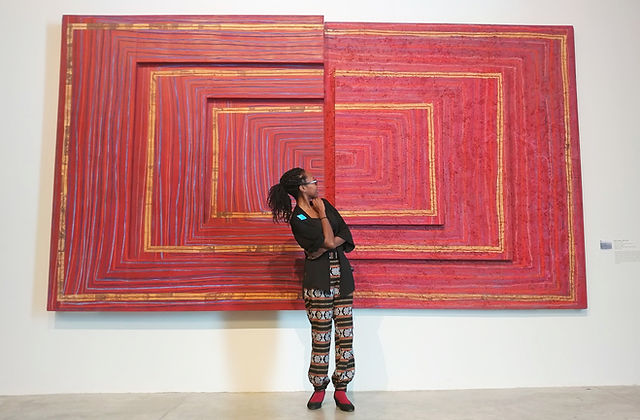
Emerging Artists and Art Collectives
Mexico City is a breeding ground for emerging artists and dynamic art collectives. Here are some trends and initiatives worth exploring:
The Rise of Street Art Collectives
Street art collectives have been on the rise in Mexico City, providing a platform for artists to collaborate, share ideas, and create powerful murals. These collectives not only beautify the city’s streets but also tackle social issues and engage with local communities. The collective nature of these projects fosters a sense of camaraderie and solidarity among artists, allowing them to amplify their voices and create impactful art.
Contemporary Art Collectives in Mexico City
Beyond street art, Mexico City is home to numerous contemporary art collectives that bring together artists from diverse backgrounds and disciplines. These collectives create collaborative projects, organize exhibitions, and advocate for social change through art. They provide a space for emerging artists to experiment, challenge artistic boundaries, and explore new perspectives.
Independent Art Spaces
Alongside traditional museums and galleries, independent art spaces have emerged as alternative platforms for artists to showcase their works. These spaces offer a more experimental and unconventional approach to art, often blurring the boundaries between different artistic disciplines. They provide emerging artists with opportunities to gain exposure, experiment with new ideas, and connect with like-minded individuals.
Art Education and Workshops
Mexico City offers a range of art education initiatives, workshops, and classes that cater to both aspiring artists and art enthusiasts. Here are some options for acquiring new skills and expanding your artistic horizons:
Academic Institutions for Art in Mexico City
Mexico City is home to several prestigious academic institutions that offer programs in various artistic disciplines. The National School of Painting, Sculpture, and Engraving “La Esmeralda” is a renowned institution that has shaped the careers of many Mexican artists. The National Autonomous University of Mexico (UNAM) and the National Institute of Fine Arts (INBA) also offer programs in fine arts, design, and art history.
Art Workshops and Classes
For those looking for a more hands-on artistic experience, numerous workshops and classes are available throughout the city. These range from painting and sculpture classes to photography and printmaking workshops. These opportunities allow participants to learn new techniques, refine their skills, and engage with other artists in a creative environment.
Art Education Initiatives
In addition to formal academic institutions, there are various art education initiatives in Mexico City that aim to democratize access to art education. These initiatives provide art classes, workshops, and cultural activities to underserved communities, fostering creativity and empowering individuals through art. They play a crucial role in promoting art as a tool for personal growth and community development.
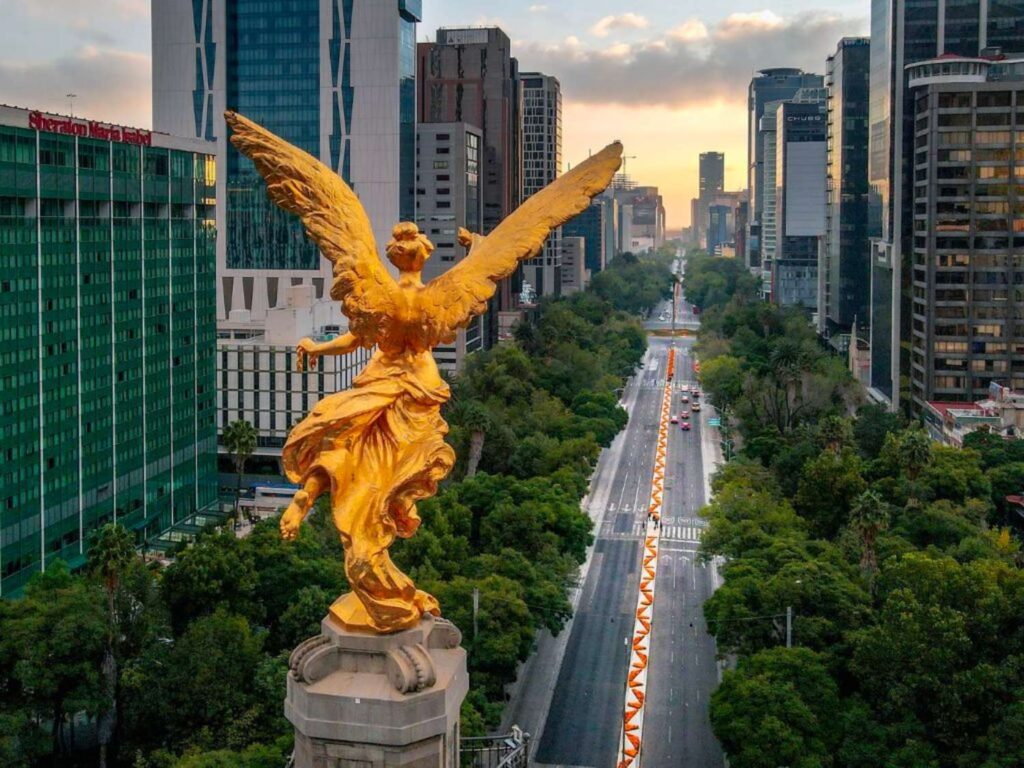
Supporting the Art Scene in Mexico City
The thriving art scene of Mexico City relies on the support of individuals, organizations, and institutions. Here are some ways you can contribute to the growth and sustainability of the art community:
Art Patronage and Philanthropy
Art patronage and philanthropy play a crucial role in supporting artists and cultural institutions. By investing in artworks and supporting art projects, patrons contribute to the economic sustainability of the art scene. Additionally, philanthropic organizations provide funding, resources, and scholarships to support emerging artists and art initiatives.
Art Foundations and Non-Profit Organizations
Art foundations and non-profit organizations in Mexico City work tirelessly to promote and preserve the country’s artistic heritage. These organizations support artists through grants, residencies, and exhibition opportunities. They also organize educational programs, community outreach initiatives, and public art projects, enriching the cultural fabric of the city.
Art Market and Auctions
Participating in the art market, whether as a collector or a buyer, provides financial support to artists and galleries. The art market in Mexico City is vibrant and diverse, offering a wide range of artworks at various price points. Art auctions, both online and in-person, provide collectors with opportunities to acquire works while supporting the local art scene.
The Impact of the Art Scene on Tourism
The art scene in Mexico City has a significant impact on tourism, attracting art lovers from around the world. Here are some ways in which the art scene enriches the tourism experience:
Art Tourism in Mexico City
Art tourism is a growing trend in Mexico City, with visitors traveling specifically to explore its art scene. The city’s diverse museums, galleries, and public art installations offer unique cultural experiences that captivate tourists. Art-themed tours, guided by local experts, provide visitors with insights into the city’s artistic history and contemporary trends, enhancing their overall travel experience.
Art Hotels and Accommodations
To cater to the growing demand for art tourism, many hotels in Mexico City have incorporated art into their designs and offerings. Art hotels feature curated collections, installations, and exhibitions by local and international artists. These accommodations provide a unique and immersive experience for art enthusiasts, allowing them to stay surrounded by creativity and inspiration.
Art Souvenirs and Crafts
Art souvenirs and crafts are a popular choice among tourists visiting Mexico City. From handmade textiles and ceramics to prints and small-scale artworks, these items serve as tangible reminders of the artistic richness and cultural heritage of the city. Purchasing art souvenirs not only supports local artisans but also allows visitors to take a piece of Mexico City’s art scene back home with them.
The Economic and Cultural Significance of the Art Scene
The art scene in Mexico City plays a pivotal role in both the economy and cultural identity of the city. Here are some important aspects of its significance:
Job Creation and Economic Growth
The art scene in Mexico City generates employment opportunities for artists, curators, gallery owners, educators, and cultural workers. It contributes to the local economy through art sales, tourism revenue, and the creation of jobs in related sectors. The growth of the art market and the increasing interest in Mexican art internationally have fueled economic growth and cultural exchange.
Preservation of Cultural Heritage
Mexico City’s art scene helps preserve the country’s diverse cultural heritage. Museums and galleries serve as custodians of valuable artworks and artifacts, ensuring their conservation and accessibility to the public. Through research and exhibitions, these institutions contribute to the documentation and understanding of Mexico’s artistic legacy.
Promotion of Cultural Identity
Art is a powerful tool for promoting and celebrating cultural identity. Mexico City’s art scene showcases the country’s diverse cultural traditions, histories, and perspectives. It creates spaces for dialogue, encourages cultural exchange, and fosters a sense of pride and belonging among both artists and audiences. By embracing and supporting its artistic heritage, Mexico City reinforces its cultural identity and strengthens its global presence.
Challenges and Future of the Art Scene
While Mexico City’s art scene is thriving, it does face challenges that need to be addressed to ensure its continued growth and sustainability. Here are some key challenges and considerations:
Funding and Resources
Securing funding and resources for artists, institutions, and initiatives remains a challenge in the art scene. Limited financial support impedes the development of artistic projects and hinders the accessibility of art education. Increased investment in the arts, both from public and private sectors, is necessary to support artists and facilitate the creation and dissemination of art.
Accessibility and Inclusivity
Making art accessible to a wider audience is essential for a thriving art scene. Ensuring that art spaces, exhibitions, and programs are accessible to people with disabilities, diverse socioeconomic backgrounds, and marginalized communities is crucial. Additionally, fostering inclusivity and diversity among artists, curators, and art professionals is necessary for the art scene to reflect the multidimensionality of Mexico City’s population.
Balancing Commercialization and Artistic Integrity
As the art market grows, striking a balance between commercialization and artistic integrity becomes increasingly important. Artists and galleries must navigate the challenges of the market without compromising their creative vision and artistic values. Emphasizing the importance of artistic expression, critical thinking, and experimentation will ensure the continued production of meaningful and thought-provoking art.
Conclusion
Mexico City’s art scene is a vibrant tapestry of historical legacy, contemporary creativity, and cultural diversity. From ancient indigenous art to groundbreaking contemporary installations, the city offers an immersive and captivating experience for art enthusiasts. Museums, galleries, street art, festivals, and artistic events provide a multitude of opportunities to explore and engage with Mexico City’s artistic heritage. By supporting the art scene, both as visitors and patrons, we contribute to the preservation of cultural heritage, economic growth, and the promotion of cultural identity. So, dear art lover, pack your curiosity and embark on a journey to immerse yourself in the thriving art scene of Mexico City. You won’t be disappointed.
